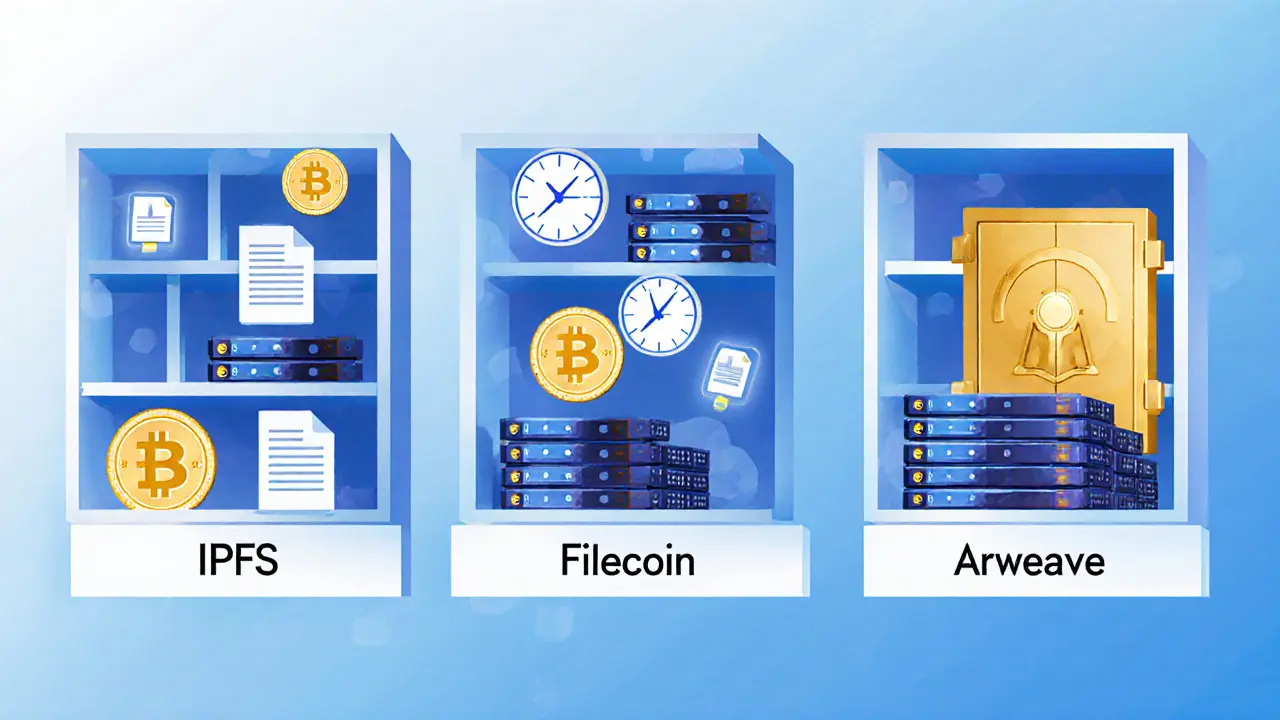Decentralized Storage: How It Works and Why It Matters for Crypto and NFTs
When you buy an NFT or store data on a blockchain, you’re not actually saving the file itself on the chain—you’re saving a link to it. That link is only as strong as the decentralized storage, a system that holds data across many computers instead of one central server. Also known as distributed storage, it’s what keeps your digital assets from vanishing when a company shuts down or a server goes offline. Most people think their NFT artwork is safe forever. But if it’s stored on a regular web server, it could disappear tomorrow—and your NFT becomes just a digital placeholder with nothing behind it.
This is where IPFS, a peer-to-peer network that stores files by their content, not their location. Also known as InterPlanetary File System, it ensures that as long as someone keeps a copy, your data stays accessible. Unlike Google Drive or Dropbox, IPFS doesn’t rely on one company. It works like a library where every copy of a book is valid—you don’t need the original, just any copy. That’s why projects like NAMA Protocol and NFT metadata systems use it. But even IPFS isn’t perfect. If no one pins your file (keeps a copy active), it can still vanish. That’s why some wallets and platforms now push for on-chain storage, putting small but critical data directly inside the blockchain transaction. Also known as fully on-chain NFTs, it’s slower and more expensive, but it’s the only way to guarantee your asset won’t break. Most NFTs today use a mix: the image is on IPFS, the metadata is on a server, and the token is on Ethereum. One weak link, and your whole asset collapses.
Decentralized storage isn’t just for NFTs. It’s the backbone of secure, censorship-resistant apps. From encrypted messaging to decentralized finance tools, if your data lives on a single company’s server, you don’t really own it. The decentralized storage movement is about taking control back. That’s why you’ll see posts here about how HAI token failed because of bad data links, why FEAR NFTs didn’t deliver, and how NFT metadata often breaks because no one maintained the storage. These aren’t just tech problems—they’re ownership problems. What you find below are real-world examples of what happens when decentralized storage is done right, done wrong, or ignored completely. You’ll learn how to spot the difference before you invest.
IPFS vs Arweave vs Filecoin: Which Decentralized Storage Solution Is Right for You?
Compare IPFS, Arweave, and Filecoin - three decentralized storage options with different models for cost, permanence, and reliability. Find out which one suits your needs for NFTs, data backups, or permanent archives.
learn more